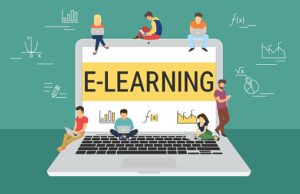Our lives are overwhelmed by innovation—we rely upon distributed computing to synchronize data among the entirety of our electronic gadgets; we can message, email, and tweet all the while from our advanced mobile phones; we approach data every minute of every day through the Internet. It’s no big surprise then that the innovation that permits us to do every one of these things is likewise progressively being applied to learning. An ever increasing number of organizations are going to e-figuring out how to give preparing and proficient improvement freedoms to their workers, because of its openness and flexibility.
As organizations handle the significance of embracing proficient improvement systems for their workers, they start to search for reasonable arrangements and best practices. E-learning is rapidly going to the cutting edge of those arrangements. Innovation has demonstrated to be an incredible empowering influence for learning by allowing more extensive access and working with proceeding with instruction all through an association. It gives a framework through which organizations can foster intelligent and connecting with stages to convey ability building, preparing data.
Nonetheless, as with most new innovations, e-learning actually has its downsides. More extensive access can likewise mean less control and potential innovation issues. Here is a portion of the advantages and disadvantages of embracing e-learning for your organization’s preparation and improvement needs.
Pros of e-learning
- Access : Maybe the most significant advantage of e-learning is that it gives admittance to a more extensive crowd. Through distributed computing and the Internet, organizations can offer to prepare devices for workers whenever anyplace. This advantages enormous, worldwide companies with workers in each landmass since now there’s a method to offer them overall a similar preparing, interpreted if essential, and voluntarily zones. Regardless of whether the organization is in just a one-time region, the advantage of access through e-learning can change the manner in which representatives are prepared and the manner in which businesses deal with their advancement.
- Low cost: Another critical benefit to e-learning—and one that accounts offices wherever can cheer over—is its general minimal expense. E-learning doesn’t need paying a teacher, organizations don’t need to discover and pay for a space to hold the preparation, and they don’t need to purchase any new gear or books. Any organization can track down the correct e-learning answer to fit its financial plan, contingent upon its essential objectives and its workers’ requirements. This is particularly valid for organizations with hundreds or thousands of workers that need to get familiar with similar abilities or approaches, as adaptability incredibly decreases the expense per individual.
- Ease of use: Given how much the normal individual uses innovation consistently, and dependent on our experience with programming applications, e-learning’s convenience can be a major advantage. By picking an easy-to-understand stage, organizations can rely on their representatives having the option to explore their way around and figure out how to utilize it rapidly. Obviously, only one out of every odd e-learning stage is easy to understand and only one out of every odd worker is well informed, however by and large associations can receive the rewards of having a tech instructing device that most representatives will feel great utilizing.
- Tailoring: As far as access, cost, work, and essentially whatever else you can consider, e-learning can be custom fitted to your business needs. Regardless of whether you need to prepare for five representatives or 5,000, e-learning devices can be modified to what exactly turns out best for your organization. They can likewise be custom fitted to your workers’ necessities. In the event that workers feel like they realize certain points well indeed, they can skim through them and burn through less time. That way they can focus on the subjects they need to truly deal with. Representatives additionally will learn at their own speed, which is beneficial, taking into account that the greater part of them are adjusting numerous assignments, responsibilities, and cutoff times.
Cons of E-learning
- One size doesn’t fit for all: One of the fundamental impediments of e-learning is that it doesn’t engage all learning styles. While the vast majority like the opportunity and adaptability that e-learning gives, many lean toward the customary study hall technique to learning on a PC. A few groups may like to learn through an involved methodology and may discover e-learning excessively similar to making a halfhearted effort, rather than applying the exercises to genuine situations.
- Isolation: Learning through the Internet on singular PCs considers more extensive access, yet it can likewise effectively prompt separation. Learning up close and personal methods representatives can pose inquiries and have them addressed immediately, which isn’t the situation with e-learning. Representatives have the opportunity to learn individually any place they are, yet this may leave them with a sensation of disengagement and absence of help. The absence of an actual homeroom and educator can be baffling and demotivating.
- Tech issues: Although most of us are comfortable navigating the Internet and the computer world, not everyone is as tech-savvy. These employees may find the concept and/or execution of e-learning difficult to grasp. Even if the e-learning software is user-friendly, the idea of using it may be daunting to some, especially employees who don’t have to use computers regularly on their jobs. Other potential tech issues can include a slow Internet connection, specific browser requirements, and poor device compatibility.
- Lack of control: Through e-learning, employers are giving control to the employees to learn in their own time and in their own way. Since employees can use e-learning tools at their own pace, there’s a risk some may fall behind or just go through the material without really paying attention. This lack of control over the learning process can lead some to be wary of using e-learning for training purposes.
When strategically and properly implemented, e-learning has the potential to change the game for any company’s employee training. Have you adopted any e-learning tools for skill training and professional development? What have been the benefits and disadvantages of your business?









